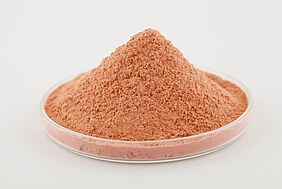In vertebrates and invertebrates, countless metabolic pathways are driven by peptides (short chains of amino acids) either produced by the metabolism itself or derived from feeds during the digestion process. Many body systems are induced by dietary peptides: immune, gastro-intestinal, nervous and cardiovascular systems as well as a lot of biological activities, such as antimicrobial, antioxidant, and immunomodulatory (Danquah & Agyei, 2012), thus, being labeled bioactive peptides. Such ones can theoretically be produced from plant, marine or and-based raw materials, with marine raw materials being found to be the most promising source of such bioactive molecules. Among marine raw materials, crustaceans differ by a unique protein profile and specific peptides produced during protein hydrolysis.
Symrise Aqua Feed produces shrimp hydrolysate from carefully selected fresh P. vannamei shrimp heads sourced from seafood processing plants. The shrimp heads undergo an optimized hydrolysis process developed by the company, maximizing bioactive peptide yield and ensuring a standardized final product. This very accurate process will result in a unique peptide profile, combining the required levels – and balance – of free amino acids, di-, tripeptides and bioactive peptides of higher molecular weight. The end product shows a protein content of 67%, with a protein solubility higher than 90% characterized by a minimum of 85% of peptides below 1000Da.
A PhD study, funded by Symrise Aqua Feed, identified over 1,000 peptide sequences in this shrimp hydrolysate (Robert, 2014), many originating from the cleavage of hemocyanin protein. Hemocyanin is the predominant protein in crustaceans, essential for oxygen transport and involved in various metabolic and immune pathways (Coates & Nairn, 2014; Zhang et al., 2009). As an illustration, hemocyanin is known to encrypt various antimicrobial peptides that can be released after hydrolysis process (Rosa & Barracco, 2010; Yang et al., 2018) as part of shrimp non-specific immune defenses.

